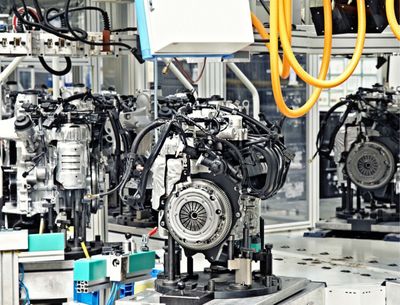Optimized Engine Calibration at Toyota TDC

- Company: Toyota Technical Development Corporation (TDC)
- ESTECO Software Solution: modeFRONTIER
- Benefits:
Toyota has virtualized a significant portion of its calibration and testing process, reducing dramatically the development time and man-hours dedicated to it. Mr. Goh [Project manager, TMC Laboratory Automation System, Toyota Technical Development Corp.] and Mr. Goto [Group Manager, Power Train Company, Engine Management System Development] talk about the benefits of using automated Design Exploration techniques to verify actuator responses and identify the best control values. “It’s easy to find the optimal control value for a single actuator but when looking to improve EGR, supercharging, VTT, direct injection, etc. With the number of actuators and consequently of the output variables and constraints, manually identifying the optimal control values would require a massive amount of time due to measurement tasks.”, says Mr. Goh.
"During the evaluation, it is easy to stop modeFrontier and change the DOE. Given certain scenarios, with this technique we can reduce the number of evaluation by 50%."
Methodology
To test the engine, temperature and pressure sensors, torque and fuel consumption (gauge) meter and exhaust gas analyzer are installed and the control systems are implemented accordingly. The combined software iTEST and ORION – the automated control and measurement system for engine bench test implemented at Toyota – manages the controls equipment and collects the output from each instrument. These values are then validated by checking the reference maps. The complexity of the calibration procedure is streamlined by including modeFRONTIER in the process, directly integrated with ORION – that is used for automatic measurements. This replaces all the manual measurement tasks conducted at the engine test bench (laboratory) and relieves the team from the burden of the repeated iterations between the “design room” and the “laboratory”, where now measurement, modelling and accuracy evaluation can be automatically repeated. “To understand the output trend and find the optimal solution with experimental points, we used mFC to create a Design of Experiment, measure data, train and compare metamodels (RSMs). The next step of the process consists in determining the optimal Engine Control Units maps and finally test again on the real engine.” “mFC succeeds in reducing the difficulties experienced by calibration engineers when using tools for model-based calibration by providing a dedicated graphic interface to directly set parameters, lower and upper bounds. mFC automatically generates designs and RSMs, then iteratively evaluates the accuracy levels and stops the evaluations when the target model accuracy is reached.” Mr. Goh says. Since real engine test is influenced by the variability of control variables and by measurements error, sometimes the combination of temperature, pressure and torque cause the stop of the testing for safety reasons.
Benefits
By using a visual filter in mFC, this issue is easily identified and the DOE is automatically substituted with a more suitable dataset. “In any case, during the evaluation, it is easy to stop mFC and change the DOE. Given certain scenarios, with this technique we can reduce the number of evaluation by 50%” Mr Goh says. This method empowers the system engineering process by adding the capabilities of simulation and automation in the right side of the V-cycle, the experimental evaluation phase of the Verification and Validation model, where is hardly used. ESTECO modeFRONTIER technology has been widely used in the engine modeling phase, in combination with GT-SUITE. Mr. Goto says that by reciprocally using optimization result as continuous feedback between the design and testing phases, there is great potential for further accuracy improvement. “By performing optimization with real engine data, we can leverage the efficiency and accuracy gained during the testing back in model design. Thanks to the common use of both data and models, designer and calibration experts can work together and further improve our operations” concluded Mr. Goh, stressing collaboration among experts as a major benefit of this technology.
"By performing optimization with real engine data, we can leverage the efficiency and accuracy gained during the testing back in model design."
As a subsidiary of Toyota Motor Corporation, Toyota Technical Development Corporation provides research and development services. The Company researches and develops vehicle, electronic systems, communication systems, material technology, measurement hardware, and other technical facilities. Toyota Technical Development also provides facility maintenance, information analysis, and technical training services. www.toyota-td.jp


